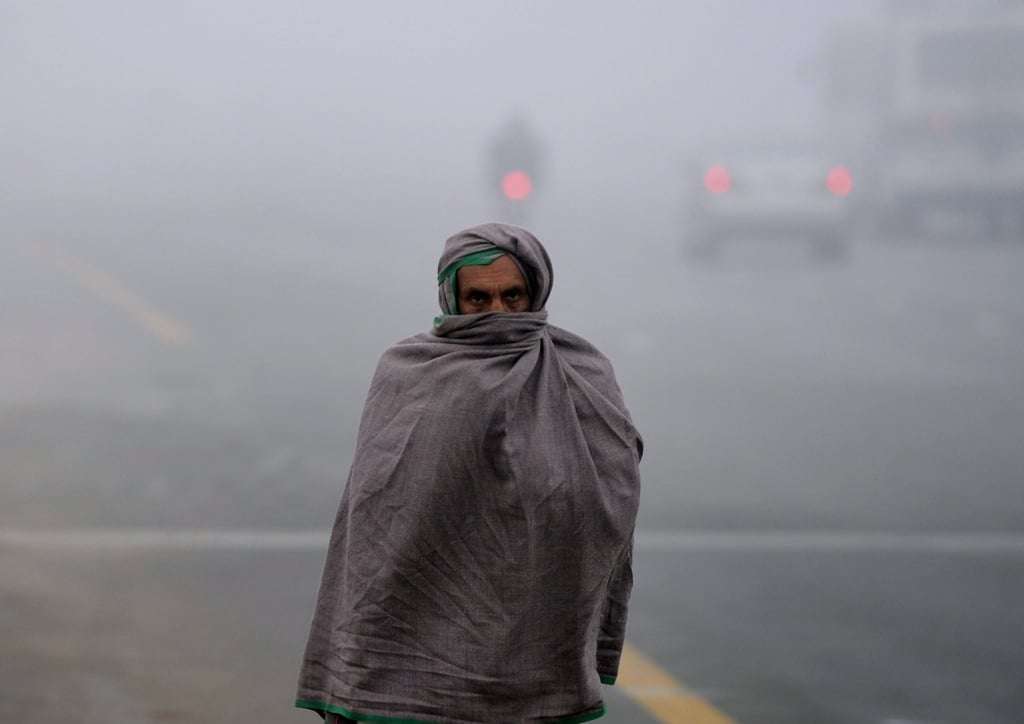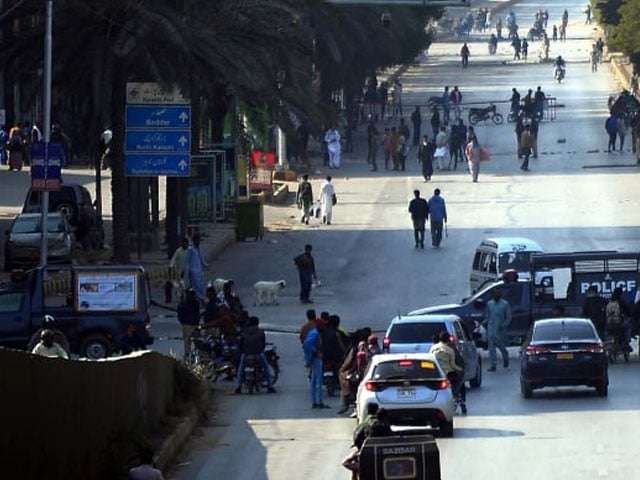Introduction
Pakistan is experiencing a sharp drop in temperatures as winter sets in across the country. Karachi, the bustling port city, woke up to a chilly Sunday morning with temperatures dipping lower than usual. In Balochistan, the cold wave has intensified, with temperatures plunging to sub-zero levels, disrupting daily life. This weather shift is part of a broader system that has swept across various parts of the country, affecting not just temperatures but also bringing the possibility of rain and snow to northern and central regions.
The Pakistan Meteorological Department (PMD) has issued several weather alerts, forecasting a continuation of the cold wave, which has made life increasingly difficult in many regions. In this article, we will delve deeper into the cold weather’s impact on Karachi and Balochistan, provide updates on weather forecasts for the rest of the country, and offer tips on how to stay safe during these extreme conditions.
Karachi: A Chilly Sunday Morning
Temperature Drops in Karachi
Karachi, known for its moderate climate, is experiencing unusual chilly weather this season. On Sunday morning, the temperature in the city was recorded at 12.7°C, marking a drop of two degrees Celsius compared to recent days. The current temperature is holding steady at 13°C, a reminder that the winter season has arrived in full force.
The cold has caught many residents off-guard, as Karachi typically enjoys a milder winter compared to the northern and central parts of Pakistan. However, the shift in temperature is significant enough to make the usual morning routine more challenging for residents, especially those unprepared for the sudden drop in temperature.
Northeasterly Winds and Daytime Highs
According to the PMD, Karachi will experience northeasterly winds at a speed of 7 km/h, which will help push the daytime high to a maximum of 29°C. While the mornings are chilly, the winds are expected to bring a slight increase in temperature later in the day. Despite the mild daytime temperatures, the cooler nights are expected to continue, with nighttime temperatures hovering between 7°C and 9°C in Karachi.
The relatively cooler weather is expected to persist for a few days, with the possibility of fluctuating temperatures as the western weather system moves across the region.
Severe Cold in Balochistan
Record Low Temperatures in Quetta
Balochistan is facing a particularly harsh winter, with temperatures dropping to sub-zero levels in several parts of the province. Quetta, the provincial capital, is experiencing an intense cold wave, with temperatures plunging to as low as -2°C. This is a significant drop, considering the typical temperatures during this time of year.
In addition to Quetta, other parts of Balochistan, including Kalat and Mastung, are facing even more extreme cold. Kalat reported a temperature of -7°C, while Mastung saw temperatures dip to -3°C, leaving residents grappling with harsh conditions.
The cold in Balochistan has not only made life difficult for the people living in these regions but also caused frozen water in several areas, further compounding the difficulties. With water sources freezing over, residents are forced to find alternate ways to access water, adding to the daily struggle of survival in these cold conditions.
Impact on Daily Life
Unannounced electricity and gas outages have exacerbated the already challenging living conditions in Balochistan. Many residents are left without heating, making it harder to stay warm during the frigid temperatures. The power and gas disruptions have also led to difficulties in cooking food, which is a basic necessity during the winter months.
The ongoing cold wave in Balochistan is disrupting daily life, with schools and businesses experiencing closures, and the elderly and children being particularly vulnerable to the severe weather. The government has urged people to take extra precautions and stay indoors as much as possible to avoid frostbite and other cold-related health issues.
PMD Weather Forecast: A Nation in Chill
Mild Cold Wave in Sindh
The PMD had earlier predicted a mild cold wave in Sindh, which includes Karachi. The weather department has forecast night-time temperatures between 7°C and 9°C for most cities in the province, including Karachi. While these temperatures are not as extreme as in Balochistan, the cold is still a significant shift for Sindh residents who are accustomed to milder winters.
This forecast comes as part of a broader weather system that has entered Pakistan, bringing cooler temperatures and increased chances of rain and snow in certain parts of the country. The shift in weather is expected to affect both urban and rural areas, with the temperature dips leading to increased demand for heating solutions, warm clothing, and food supplies.
Western Weather System Brings Rain and Snow
A powerful western weather system has entered Pakistan, bringing the possibility of rain and snow to several regions. The PMD has forecast rain in the central and northern districts of Punjab, with the possibility of snowfall in the hilly areas. This weather system is expected to intensify the cold wave in these regions and bring additional disruptions to daily life.
The snow-capped mountains in the northern regions of Punjab, including Murree and Naran, are expected to experience significant snowfall, adding to the region’s picturesque winter scenery. However, the heavy snow and rain could also lead to traffic disruptions, power outages, and other challenges for residents and travelers in these areas.
Impact on Lahore
In Lahore, the capital of Punjab, the weather system is expected to bring a sharp drop in temperatures. The PMD has forecast a minimum temperature of 8.5°C, with the maximum reaching 24°C. The chilly mornings and cooler evenings are expected to continue for the next few days as the weather system moves across the region.
While Lahore will experience colder temperatures, the rain and snow in northern and central Punjab will likely provide much-needed moisture for agricultural areas. This could be a welcome development for farmers who rely on winter rains for their crops, especially in regions facing water scarcity.
The Cold Wave’s Effect on Agriculture
While the ongoing cold wave and potential snowfall may cause disruptions in daily life, the weather system is expected to have some positive effects as well. The rain brought by the western weather system could benefit agricultural areas, replenishing soil moisture and providing relief to farmers in drought-affected regions. This is particularly important as Pakistan’s agricultural sector has been facing challenges due to irregular weather patterns and water shortages in recent years.
The rainfall may also provide the necessary conditions for winter crops to thrive, including wheat, barley, and other essential crops. However, the cold temperatures also pose risks to certain crops, which could face damage from frost and freezing conditions if the cold wave persists for too long.
How to Stay Safe During the Cold Wave
Tips for Coping with Extreme Cold
- Layer Up: To protect yourself from the cold, wear multiple layers of clothing. Woolen clothes, scarves, and thermal wear can help you retain body heat.
- Stay Indoors: Avoid unnecessary outdoor exposure, especially during the coldest hours of the day. Keep your home insulated and make sure that heating systems are functioning properly.
- Hydrate: Even in cold weather, it is important to stay hydrated. Drink warm fluids like tea and soups to stay warm from the inside.
- Protect Vulnerable Groups: The elderly and children are particularly vulnerable to cold weather. Ensure they are bundled up and avoid exposing them to freezing temperatures for extended periods.
- Prepare for Emergencies: Keep backup heating options, candles, and warm clothing ready in case of power outages.
Conclusion
As Karachi experiences a rare cold snap and Balochistan faces extreme temperatures, the country braces itself for further disruptions due to a powerful weather system sweeping through the region. While these conditions pose challenges to daily life, they also offer opportunities for the agricultural sector to benefit from the much-needed rainfall. The PMD’s forecast indicates that the cold wave will persist for several days, and residents are urged to take necessary precautions to stay safe during this period.
FAQs
- What is the current temperature in Karachi?
- Karachi’s current temperature is around 13°C, with the city experiencing a chilly start to the morning.
- How low has the temperature dropped in Balochistan?
- In Quetta, the temperature has dropped to -2°C, with Kalat and Mastung reporting even colder temperatures of -7°C and -3°C, respectively.
- What is the weather forecast for Lahore?
- Lahore is expected to have a minimum temperature of 8.5°C and a maximum of 24°C, with colder winds and possible rain in the coming days.
- How can I stay safe during this cold wave?
- To stay safe, wear warm clothing, stay indoors when possible, hydrate, and protect vulnerable individuals like children and the elderly.
- Will the cold weather affect agriculture?
- While the cold weather may pose risks to some crops, the rainfall brought by the western weather system could benefit agricultural areas by replenishing soil moisture.



